How to prune roses: the beginner’s guide to easy pruning
 Lee Burkhill: Award Winning Designer & BBC 1's Garden Rescue Presenters Official Blog
Lee Burkhill: Award Winning Designer & BBC 1's Garden Rescue Presenters Official Blog

Roses are the quintessential English garden plant. You would be hard-pressed to find someone who doesn't have a fondness for the rose. Whether it be that bridal bouquet, Valentine's Day or visits to English country gardens; the rose is one of the most iconic garden flowers.
However, the beauty of roses also comes with some thorny maintenance issues and confusion on how to keep them looking their best. This guide will show you how to prune roses with ease!
For beginner gardeners, roses can be daunting and intimidating to keep. When I first started gardening I too had these feelings. I didn't know how to manage them or what to do with them after they had flowered. Leading to the couple I had turned into nasty tangled messes! It's so easy to opt for a shrub or herbaceous perennial instead.
This guide will show you just how easy it is to prune even the most unruly of roses, whipping them back into shape in a couple of seasons. I'm going to show you how you can do this without any drama or even skill. All you're going to need is some sharp secateurs and gloves, never forget the gloves!
This page contains affiliate links for products I use and love. If you take action (i.e. subscribe, make a purchase) after clicking a link, I may earn some gardening commission which helps me keep the Garden Ninja Blog free for all.
Pruning roses is done in later winter when the leaves have fallen and the bare skeleton of the rose bush, shrub, or climber is visible. This is when the rose is dormant.
In the UK I prune all my roses in February. Just before spring. The exception is climbing (not rambling) roses which I prune in late Autumn instead once the rose has finished flowering.
If you don't prune your roses they can quickly get out of shape and only flower at the very ends of the too growth. Leading to tall straggly awkward-looking roses.
By pruning them we are encouraging a more manageable and floriferous display (lots of gorgeous well-spaced flowers) on our roses.
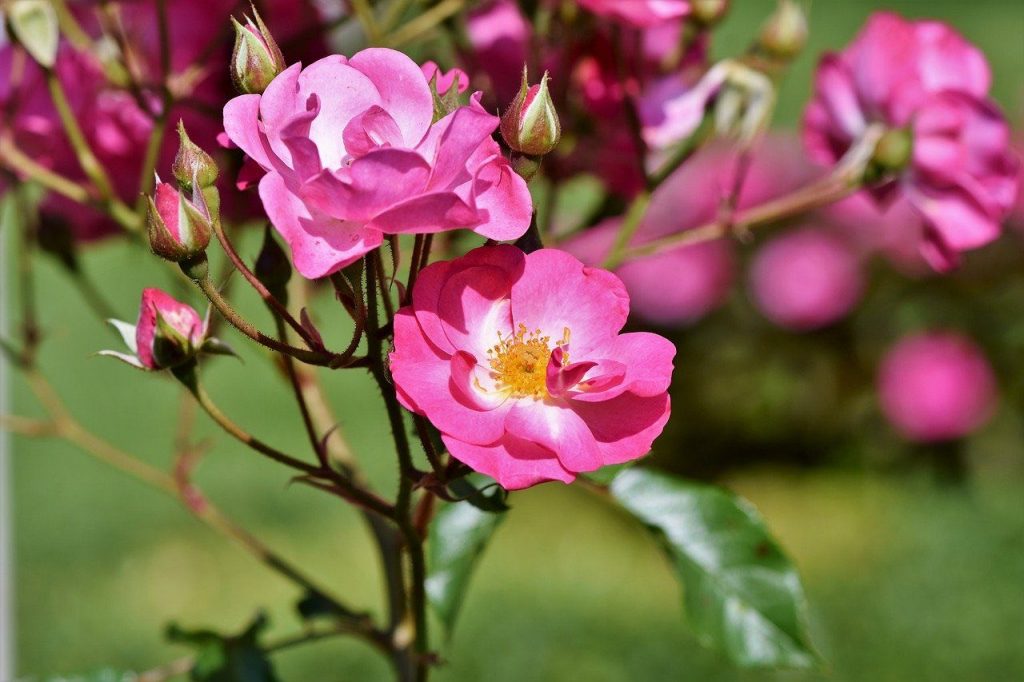
Using the right tools to prune your roses is essential. If you try and use old rusty scissors or secateurs you're likely to find the whole practice of pruning roses difficult. Pruning roses should be easy and fuss-free. Take a look below at the simple tools needed when pruning roses.
Before you start you will need a clean sharp pair of quality secateurs, I've already provided advice on the kinds of secateurs and how much the beginner gardener should spend here. These are essential to ensure neat and tidy cuts. If not the Rose may get damaged or diseased. It also helps to make the process much less fussy than blunt crude scissors.
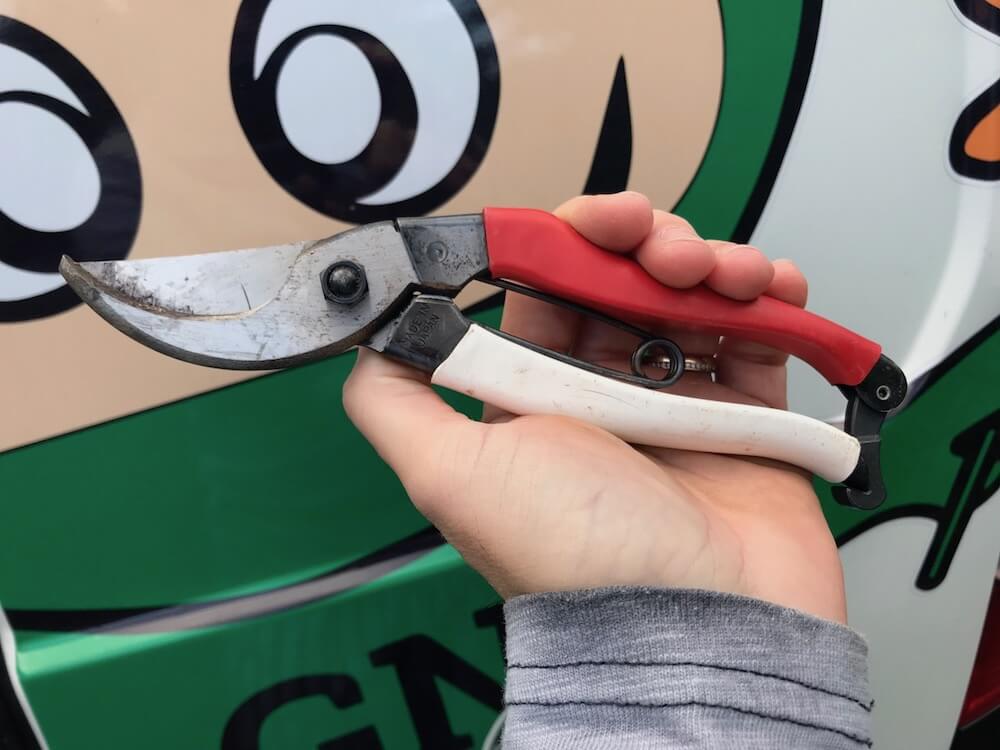
It's important to make sure you clear up your cuttings as rose pruning are sharp and woody. If not you may find yourself grabbing a thorny branch when weeding your flower beds. Whilst you can compost rose cuttings I'd be mindful that they take a while the break down and often their thorns still remain, making it hard to work with as compost. I either recycle them in my green bin or shred them rather than putting them on my compost heap.
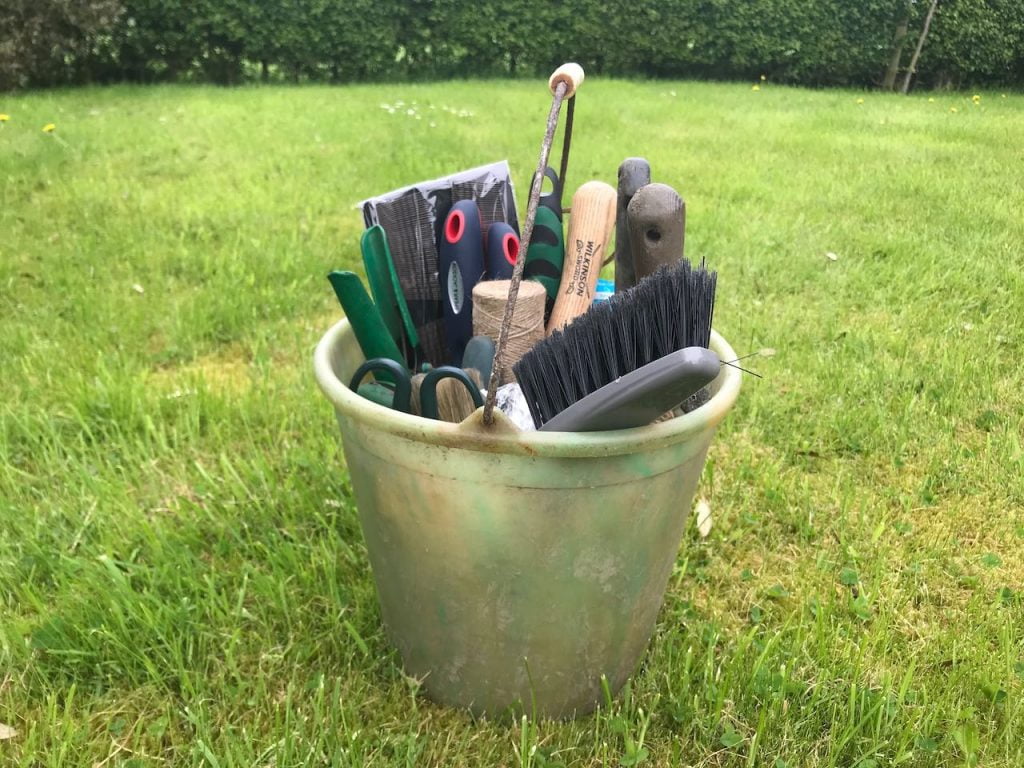
A bucket or flexi trug is best for collecting rose prunings but also doubles up as a handy tool caddy!
When making any pruning cuts you are always wanting to cut at an angle away from the lateral bud below (lateral buds turn into horizontal growth off the main stem - think of them as mini branches). This allows
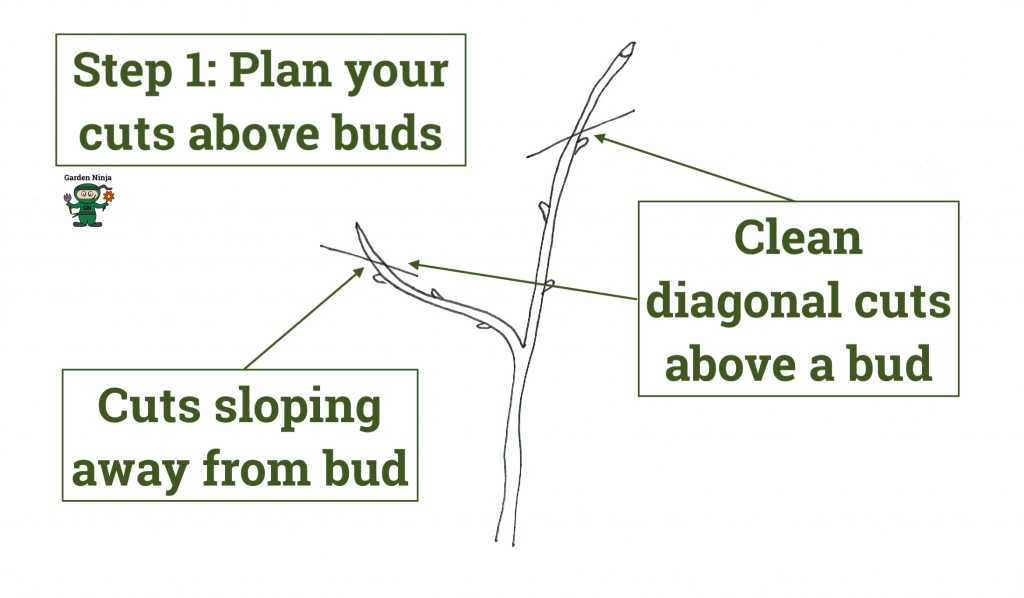
You also want to make sure you don't cut too far above a bud as this will just encourage the part above the bud to die back. However, it's not rocket science and practice will help you work out exactly how high to cut simply watch the video above!
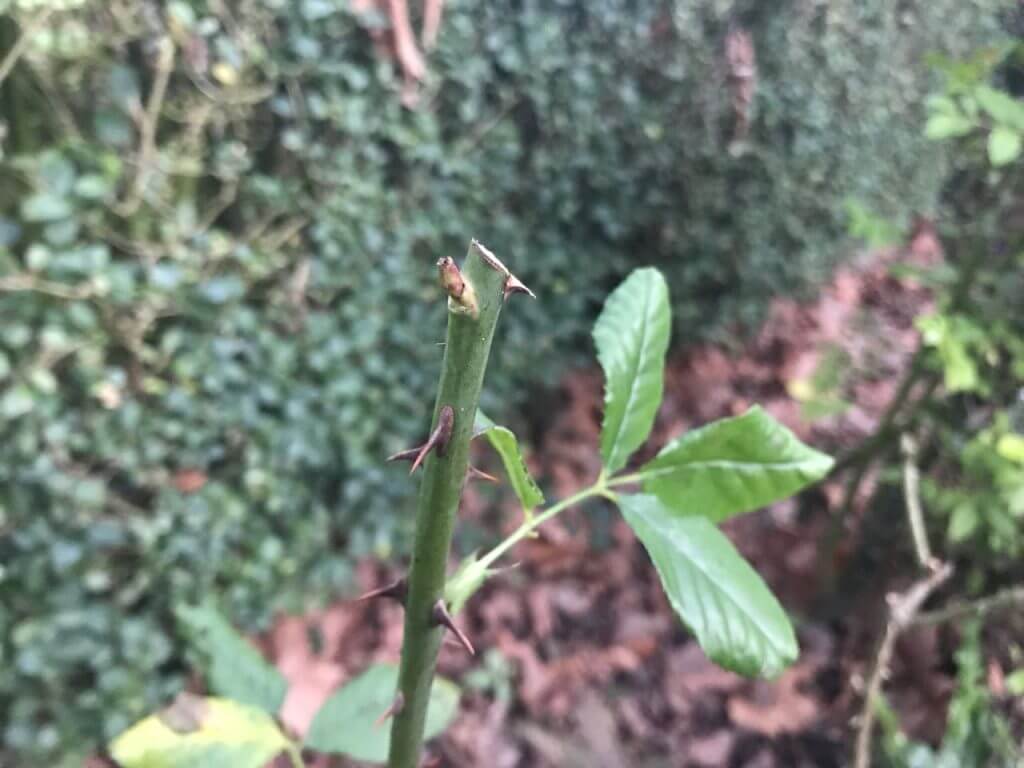
Pruning roses is super easy but seems to daunt many a new gardener. However, ignoring rose pruning just leads to awkward straggly roses with fewer flowers and more drama. It's really rather simple to prune any rose if you follow these four simple steps. There are a few nuances with pruning certain types of roses which I cover further down the guide.
However, as a starting point, these 4 tips are nearly foolproof for most roses, even if you don't know what type of rose you are dealing with!
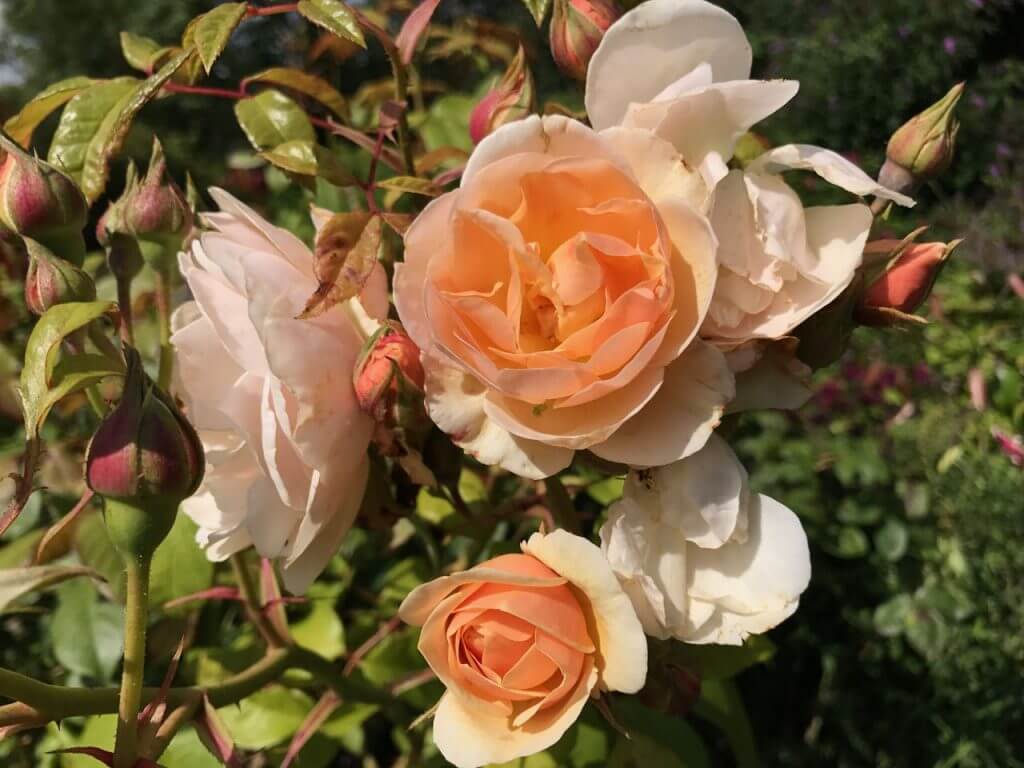
Before we get all giddy in pruning the 'green' bits of your Roses to encourage flowers we need to undertake some basic housekeeping. By removing the older wood you're helping to concentrate the plant's energy on the new growth and flowers. Rather than wasting it on now redundant stems.
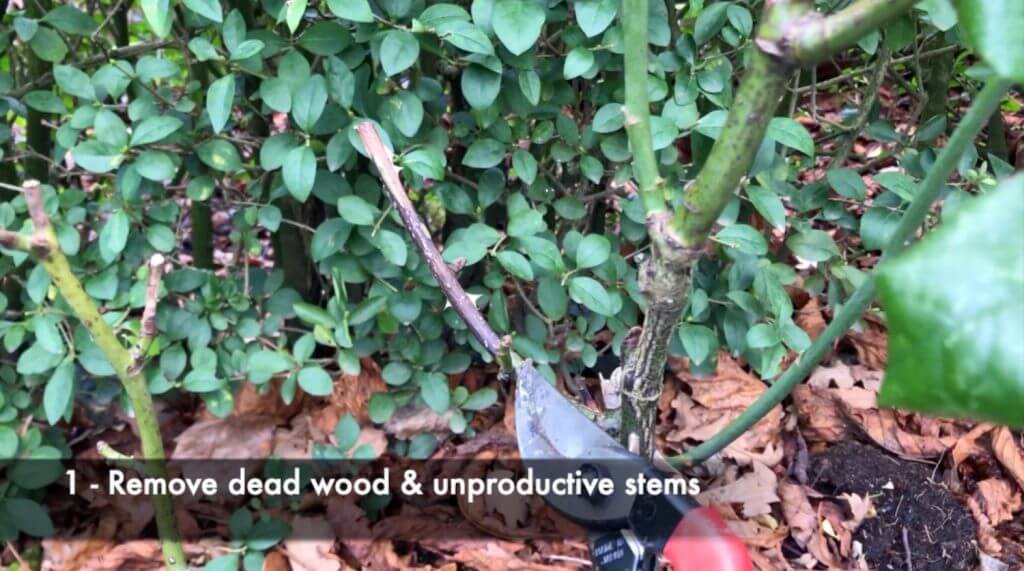
If you notice brown crispy stems or old gnarled stems that have no signs of life then we need to remove them. Cut all dead, damaged, or diseased stems back to the next living part of the stem. In the case of really old stems take them back to the ground. If you're unsure what's dead, snip a small amount off. If it's crispy and dry on the inside, it's dead so take it back.
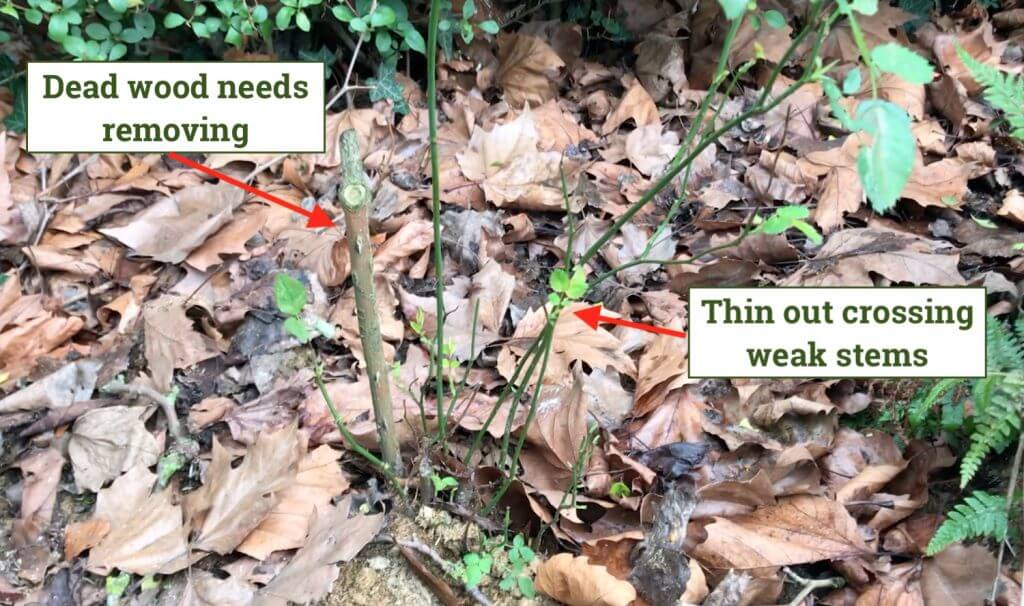
The next stage is to prune out any crossing stems. You're aiming for what is known as the 'Open Goblet' shape when pruning Roses. This simply means that there is airflow and an open shape to the rose bush. Think of the palm of your hand with your fingers in an open cup shape.
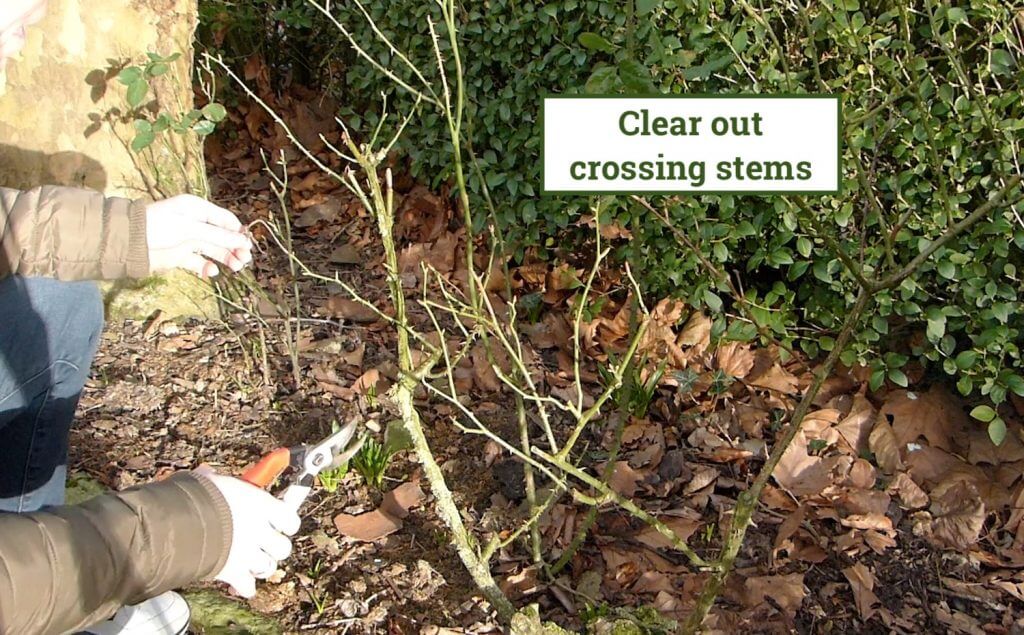
Crossing branches will cause stems to rub and cause congestion. It also restricts airflow so Rose problems such as mildew and black spot can easily spread.
Did you know that you can take my course and learn how to become a Garden Ninja yourself? Click here for details
So as a rule of thumb 1/3 works well to get a rose into a reasonable shape. You can see from the two pictures below the amount I'm taking off this Hybrid Tea rose below.
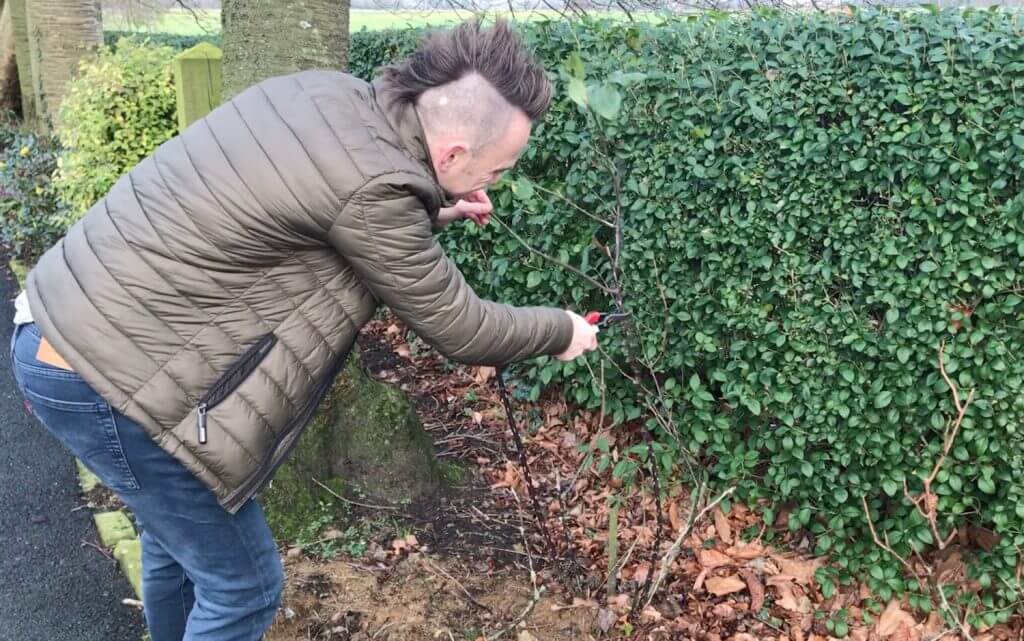
Above: The stem before the cut
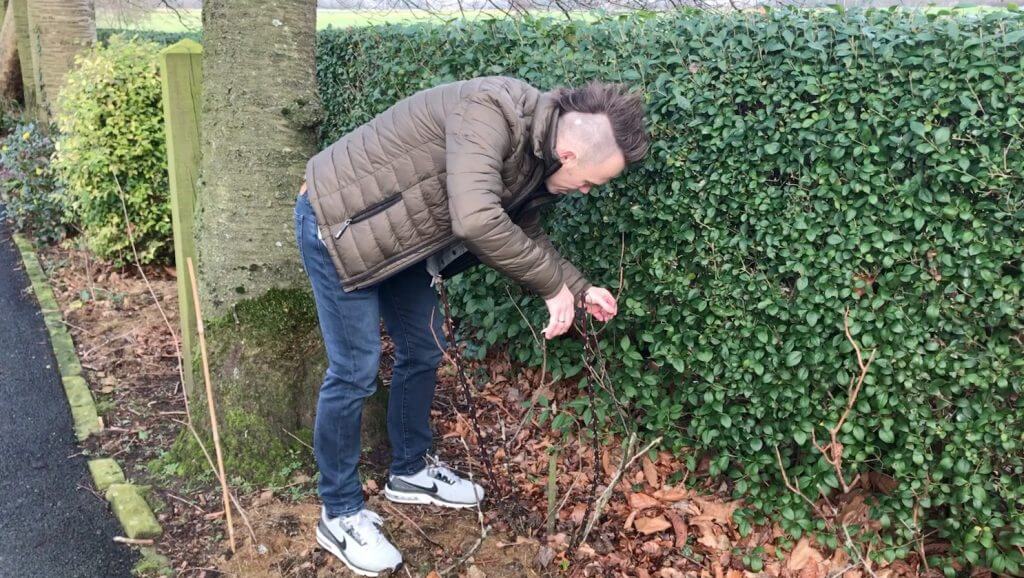
Above: The stem after 1/3 has been removed
As a good rule of thumb if you don't know, then cutting out 1/3 and that includes older stems, is a good place to start. This allows you to remove the above offending branches and then 'sculpt' the remaining rose into a neat and open shape. If you know what type of rose you have you can always search for more
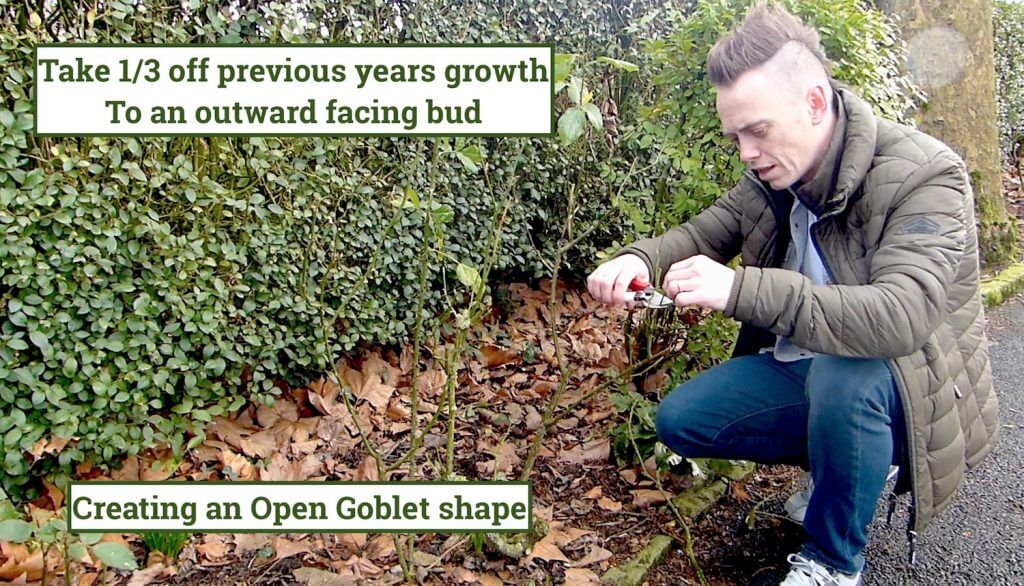
I can't stress the need for this step when pruning a rose, or any shrub really. Mulching will ensure that your rose has a steady slow-release feed when spring comes. Mulching also reduces competition from weeds and helps retain moisture. Think of it of the icing on top of the cake, it's just not the same without it! If you have no idea what mulching is there's a handy video below.
Roses are hungry plants so horse manure or compost are good ideas for mulches. I wouldn't recommend wood chips as they tend to rob nitrogen from the soil as they break down and will just inhibit the growth of the rose.

In some instances, see the Witch's finger below, you will need to hard prune your rose. If the stem where the growth occurs is really old, gnarled, and plain ugly then the best method is to take it back to the ground. With a sharp pair of garden loppers or a clean wood saw you can take this stem out completely.
This will delay your flowering, but in certain examples, this is the only way to properly renovate a rose. Trust me it will be worth it for lush green stems the next year!
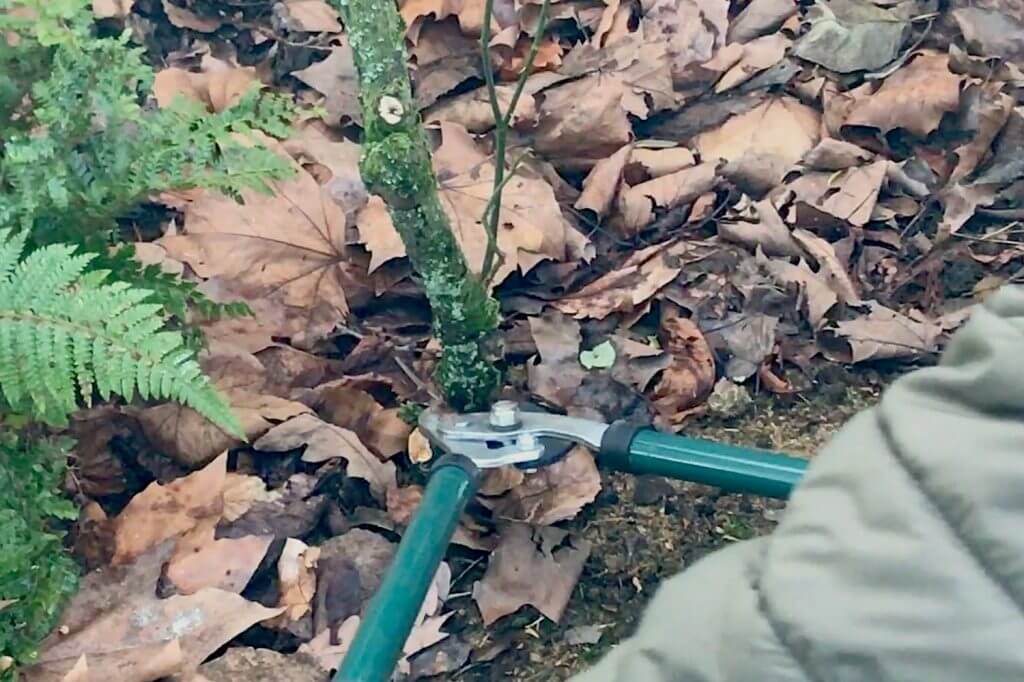
Really old unproductive growth should be hard pruned out completely like the image above.
Climbing roses are relatively easy to prune but timing is key. You want to prune your climbing roses in Autumn when they have finished flowering. I find it easier at this time of year as you can see what growth has produced flowers and what's not performing.
I tend to aim for one main stem and maybe one of two others. Anything more than this I remove. This is to stop the potential for a tangled mess. It also concentrates the resources on flowering buds.
With a climbing rose you can be quite brutal, taking all side growth back to the main stem, just above the last outward-facing bud. Don't be too worried that it is brutal, they are really resilient and it will come back. You want to create a strong framework for growth. If you let the stems get too leggy they will pull away from the trellis and start entwining other stems.
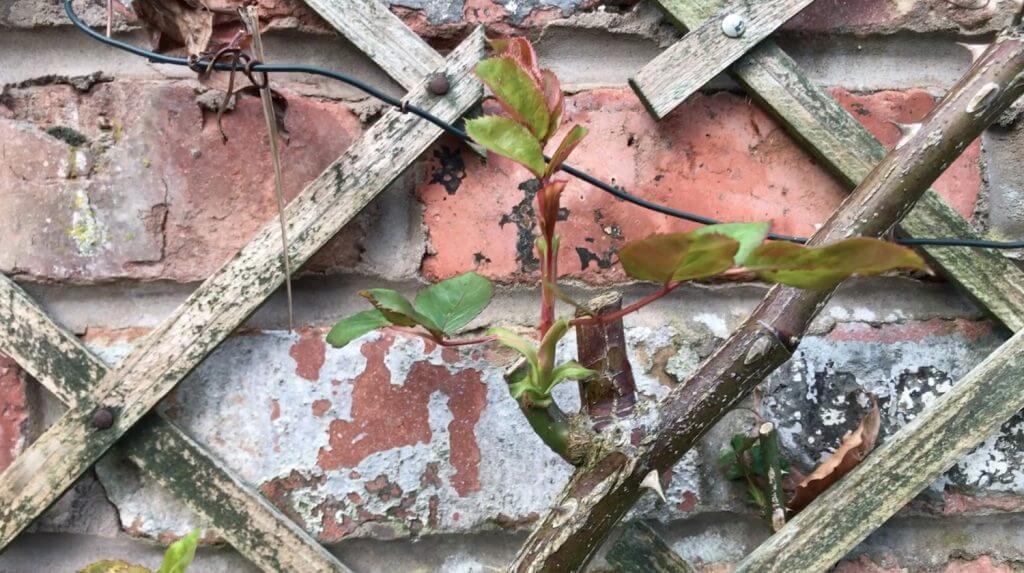
Climbing roses can be pruned in late summer and be ready for flowering the following year.
Deadheading roses is a really simple pruning technique that encourages your roses to flower for longer. Deadheading a rose is a process of removing a spent flower or rose that's starting to lose its petals.
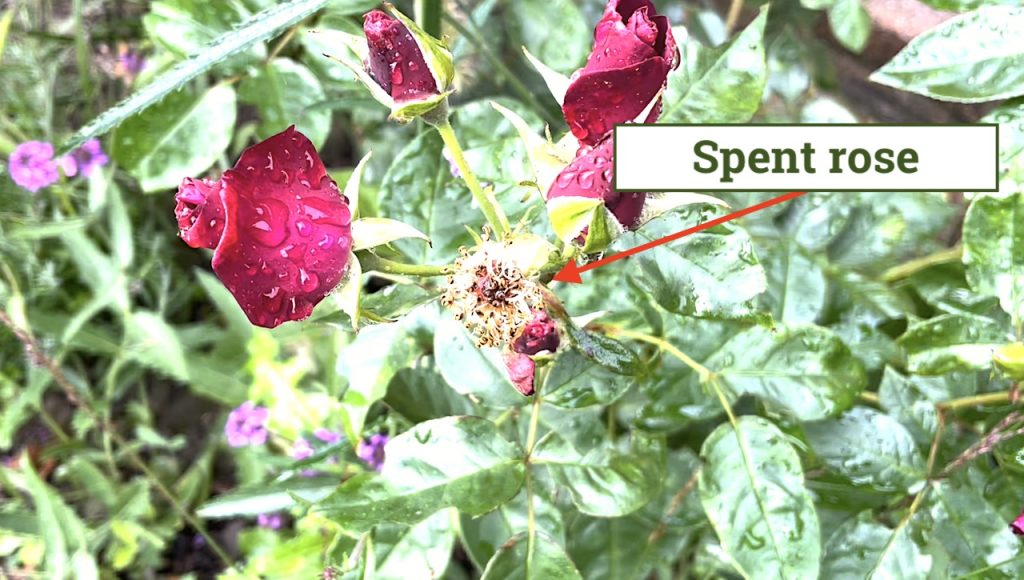
Deadheading removes the flower back to the next set of leaves down removing the entire flower stalk. Deadheading roses prevents the plant from creating a rose hip or seed. Thus conserving energy for the rose to create more flowers. After all the rose wants to create hips to reproduce, which is why it flowers. Removing these flowers before hips form forces the rose to keep flowering.
To dead head a rose snip the flower off once it starts to fade back to the next set of leaves down.
See below for a perfect cut on a dead-headed rose.
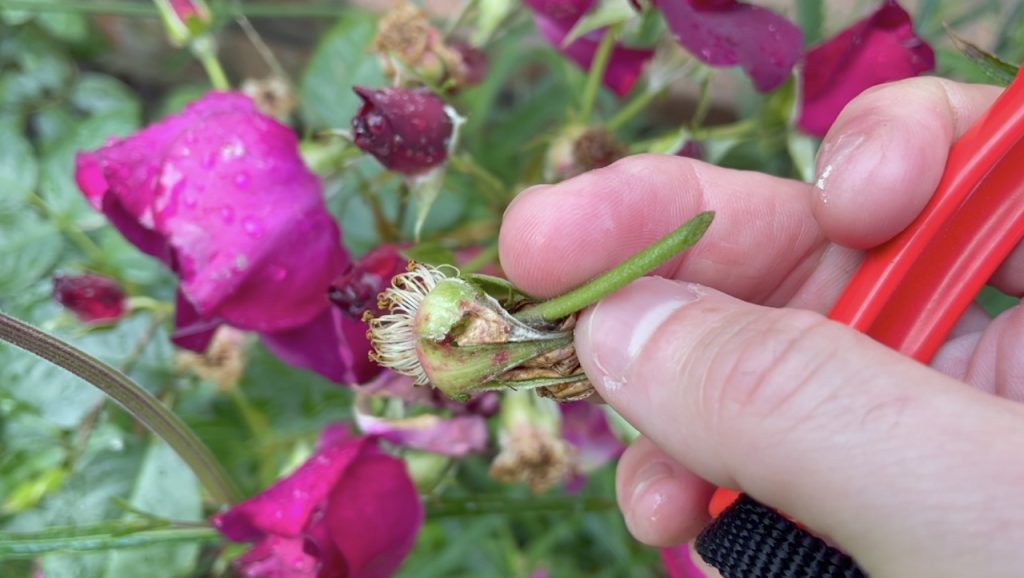
So there we have it my easy guide to pruning roses whether you know what the rose is or not! It's all too easy to just remove things in the garden that we don't immediately like or understand. I'd urge you to always give a new plant a few seasons before removing it. It's far easier to get an established plant to flower than wait for a new one to settle in.
If you have any questions please drop a comment below or add one to my Youtube channel where I'm happy to help. You can also check out my Tweet, Facebook or Instagram for more guides and tips.
Check back soon for more garden guides and happy gardening!



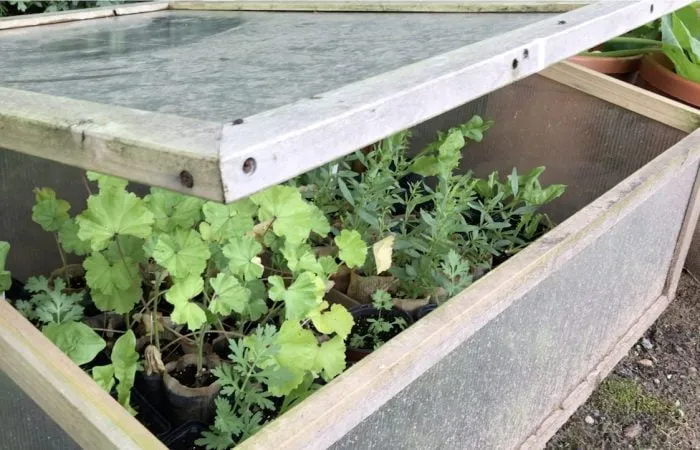
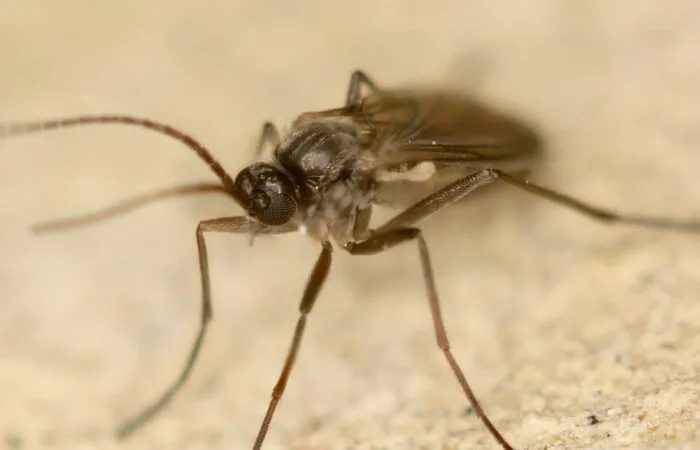
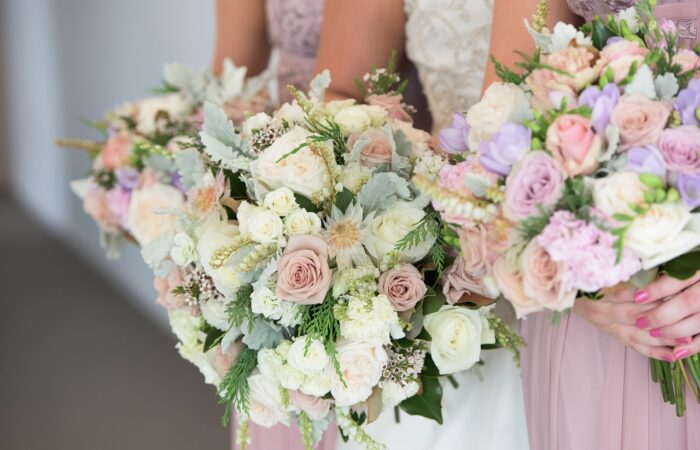
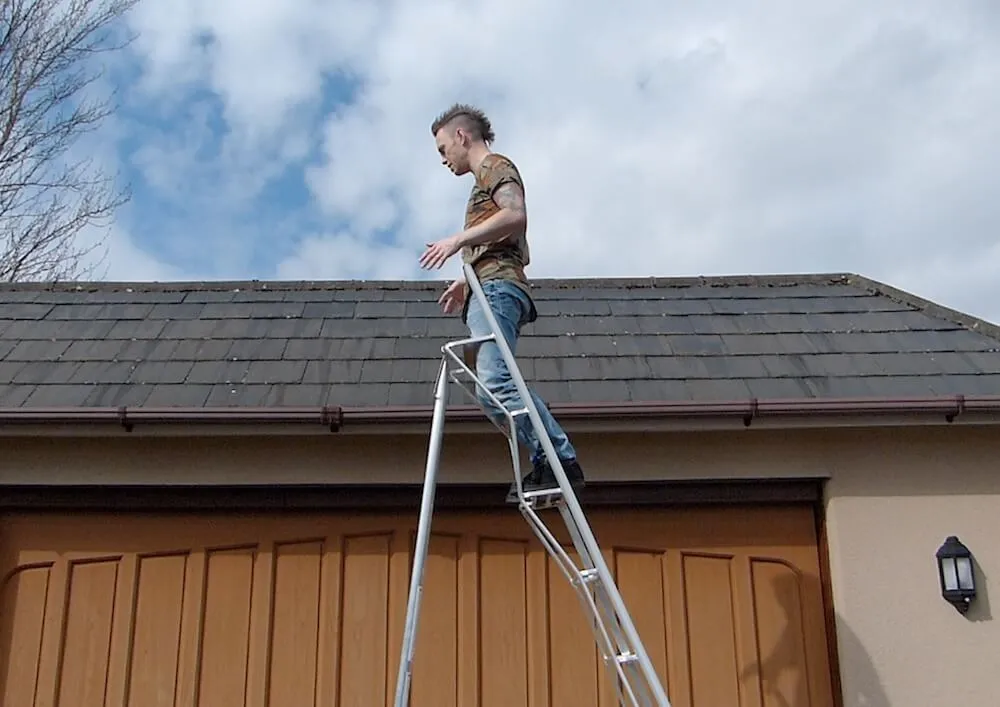


JOIN THE NINJAS
Join our Ninja community for extra guides & Discount Codes for Online Garden Courses!
I’ve been struggling with how to prune roses for years. I have either ignored them or simply dug them out. Thanks Garden Ninja for such an accessible guide! Ps I love your Youtube channel is so informative! Keep up the great work!!
Really great information given covering all areas! thanks
I came across your blog post on how to prune roses and wanted to thank you for such a helpful post! When I first started gardening about four years ago, I had no idea what a healthy rose bush should look like or how often they needed to be trimmed. Your article was really insightful in that sense – it clarified the different types of roses and showed me where to find more detailed information. Thanks again!